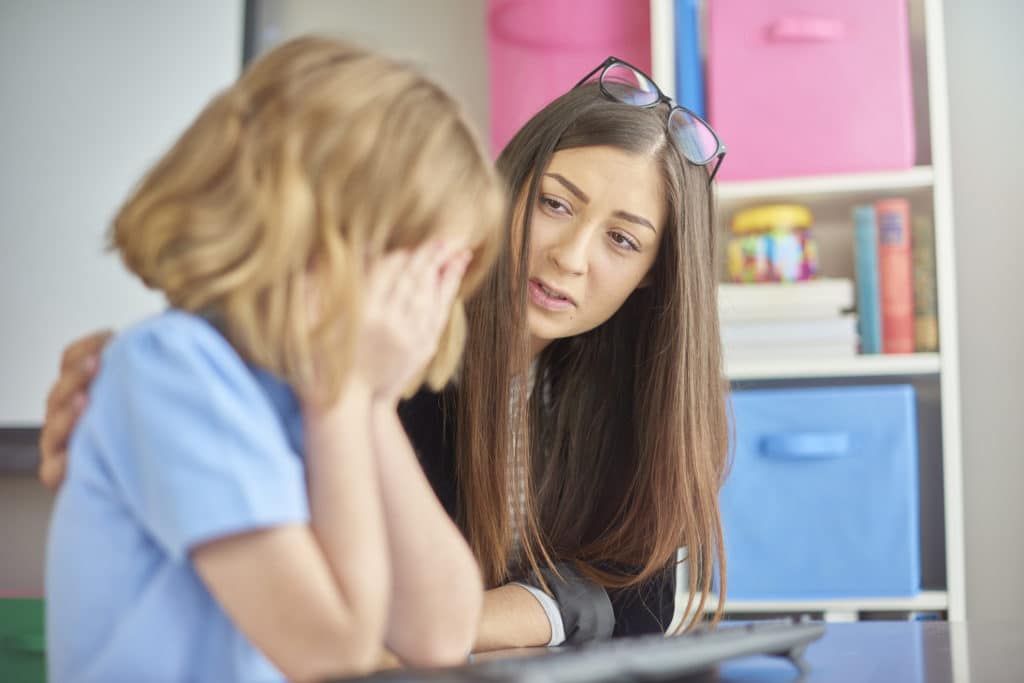Social emotional learning — also known as “SEL” — is a component of education that addresses the traditionally non-academic side of student development and learning.
The idea is that children should have ample opportunities to observe and practice the skills they’ll need to manage their social interactions and emotions as they grow into productive adults.
In this article, we’ll explore why SEL is so crucial for students and share some useful tools educators can use to integrate SEL into their classrooms.
Social emotional learning: The official definition
Before you start thinking about tools, it can be helpful to reflect on the outcomes you want for students when implementing SEL in your classroom.
Let’s start with the official definition crafted by the experts at the Collaborative for Academic, Social, and Emotional Learning (CASEL).
CASEL defines “social emotional learning” as:
“The process through which all young people and adults acquire and apply the knowledge, skills, and attitudes to develop healthy identities, manage emotions and achieve personal and collective goals, feel and show empathy for others, establish and maintain supportive relationships, and make responsible and caring decisions.”
They go on to break down SEL into five distinct categories. A well-constructed SEL program addresses students’ cognitive, behavioral, social, and emotional needs and helps them to build skills in the following key areas:
Self-awareness
- Identifying emotions
- Accurate self-perception
- Recognizing strengths
- Self-confidence
- Self-efficacy
Self-management
- Impulse control
- Stress management
- Self-discipline
- Self-motivation
- Goal-setting
- Organizational skills
Social awareness
- Perspective-taking
- Empathy
- Appreciating diversity
- Respect for others
Responsible decision-making
- Identifying problems
- Analyzing solutions
- Evaluating
- Reflecting
- Ethical responsibility
Relationship skills
- Communication
- Social engagement
- Relationship-building
- Teamwork
These categories represent areas where you can bring in tools to help students build these fundamental skills necessary for managing emotions, maintaining healthy relationships, setting and reaching goals, and more.
SEL shouldn’t be based on a prescribed curriculum. Rather, it should reflect a student-centered methodology designed to help address the individual learning needs that too often go unaddressed in traditional academic settings.
See also: Why SEL is critical to student success [infographic]
Why is SEL so important for students?
There’s plenty of research backing up the claim that SEL is critical to both the current and future success of K-12 students.
First, students who don’t have their social and emotional needs met tend to have poorer academic outcomes than those with adequate programs.
Many of the needs fulfilled by SEL also help maximize student learning. Consider Maslow’s Hierarchy of Needs. SEL targets the upper portions of this diagram by helping students attain “esteem” and “love and belonging.”
Further, students without adequate SEL development are also at risk for a variety of negative outcomes, including need for public assistance, substance abuse, emotional and behavioral issues, and criminal behavior and detention.
When SEL is implemented into the classroom with purpose and clarity, research shows a moderate reduction in infractions such as bullying, violence, cyberbullying, aggression, verbal abuse, and sexual harassment.
Beyond just decreasing negative outcomes, SEL has also been proven to increase social skills and reduce depression and anxiety among students.
These are just a few reasons why teachers are looking for new tools to bring SEL into their classrooms.
What tools are available to me to integrate SEL into my class?
We’ve compiled a list of tools that may be useful for teachers to help implement SEL into their classrooms. Check out some of our favorites below!
- Panorama Ed — Provides information about how to construct your own SEL program, as well as a collection of 20+ tools for lesson-based, in-school, or after-school SEL.
- AIR’s SEL Assessment — A free toolkit for teachers, policymakers, or administrators to assess the landscape of SEL in their environment. This tool provides a decision tree for selecting the best methods to implement.
- Edutopia — A host of videos, articles, and media that assist teachers in learning best practices for SEL and offer implementation ideas.
- Growth Mindset Prompts — Prompts to use in your classroom to get students to think and operate outside of their comfort zone.
- Common Sense Education — Provides activities, ideas, articles, and videos for teachers to integrate SEL into their classrooms, separated by grade bands: K-5, 6-8, 9-12.
- 10 Team Building Games for a Friendlier Classroom — This resource contains descriptions and content for running games that promote cooperation, collaboration, and friendly communication in your classroom.
- Michigan Cares — A comprehensive social emotional learning (SEL) program available to Michigan schools and districts at no cost.
- Free online professional development — These free online PD courses cover a variety of topics within SEL. Many of these courses were created in partnership with the Michigan Department of Education and offer SCECHs for Michigan teachers.
Final Thoughts
It’s important to remember that while many programs and tools exist, SEL will never be a one-size-fits-all curriculum because every classroom is different. The goal is to address students’ social and emotional needs by offering them opportunities to build the skills in which they are struggling.
Consider using some of the available resources listed in this article to assess where your students’ strengths and areas of growth lie. Couple this approach with your own observations of your students to get a better handle on what skills you need to work on as a class as well as at the individual level.
Once you’ve evaluated where your students currently are, you can weave in reminders to practice certain behaviors, implement discussions and activities that promote cooperation and collaboration, and encourage students to consider other viewpoints and empathize with one another.







